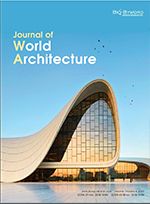Abstract
This paper presents an analysis of the challenges in risk-based resource allocation in engineering projects. Sub-sequently, an alternative resource allocation evaluation method based on language information and information axioms is proposed. Firstly, the evaluation team uses language information to give the evaluation information of the alternatives of risk resource allocation and provides the corresponding expected information for each resource. Secondly, according to the transformation formula of language information and fuzzy numbers, the above information is transformed into the evaluation information and expected information of the alternatives of risk-based resource allocation. Thirdly, according to the transformation formula of language information and fuzzy numbers, the above information is transformed into evaluation information and expectation information of alternative risk resource allocation. Finally, according to the information amount of each risk resource and the corresponding weight, the comprehensive information amount of the expected risk-based resource allocation alternatives is determined.
References
Hienuki S, Noguchi K, Shibutani T, et al., 2020, Risk Identification for the Introduction of Advanced Science and Technology: A Case Study of a Hydrogen Energy System for Smooth Social Implementation. International Journal of Hydrogen Energy, 45(30): 15027–15040.
Nguyen S, Chen SL, Du Y, et al., 2019, A Quantitative Risk Analysis Model with Integrated Deliberative Delphi Platform for Container Shipping Operational Risks. Transportation Research Part E: Logs and Transportation Review, 129(9): 203–227.
Dong Y, Zhao S, Zhang H, et al., 2018, A Self-Management Mechanism for Noncooperative Behaviors in LargeScaleGroup Consensus Reaching Processes. IEEE Transactions on Fuzzy Systems, 26(6): 3276–3288.
Cheng D, Cheng F, Zhou Z, et al., 2020, Reaching A Minimum Adjustment Consensus In Social Network Group Decision-Making. Information Fusion, 59(7): 30–43.
Wang ZQ, Chen ZS, Garg H, et al., 2022, An Integrated Quality-Function-Deployment And Stochastic-Dominance-Based Decision-Making Approach for Prioritizing Product Concept Alternatives. Complex & Intelligent Systems, 8(3): 2541–2556.
Ma Z, Zhu J, Kumaraswamy P, et al., 2019, A Clustering Method for Large-Scale Group Decision-Making with Multi-Stage Hesitant Fuzzy Linguistic Terms. Information Fusion, 50(10): 231–250.
Huang H, Liu L, Parker G, et al., 2019, Multi?Attribute Procurement Auctions in the Presence of Satisfaction Risk.Production and Operations Management, 28(5): 1206–1221.
